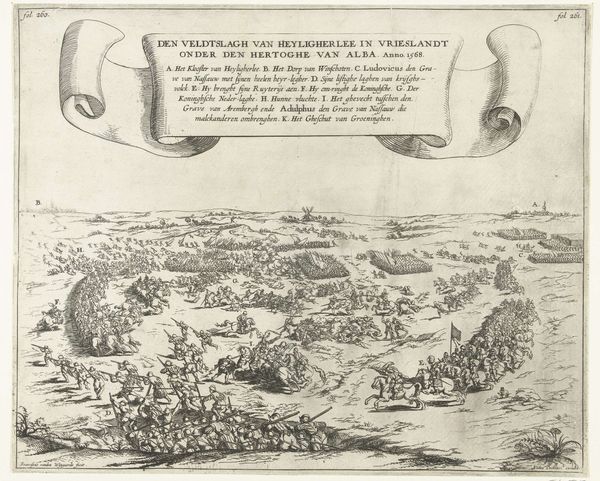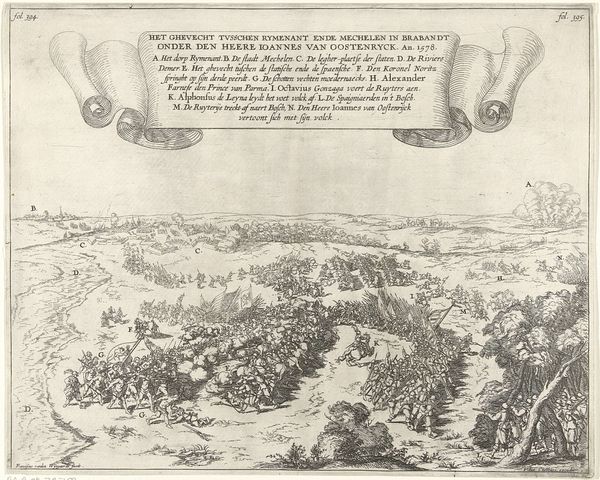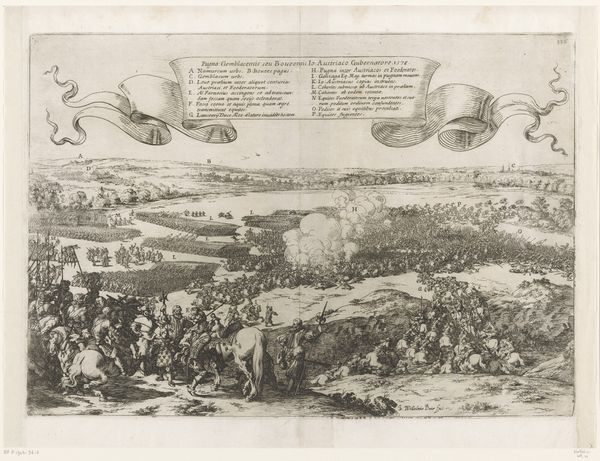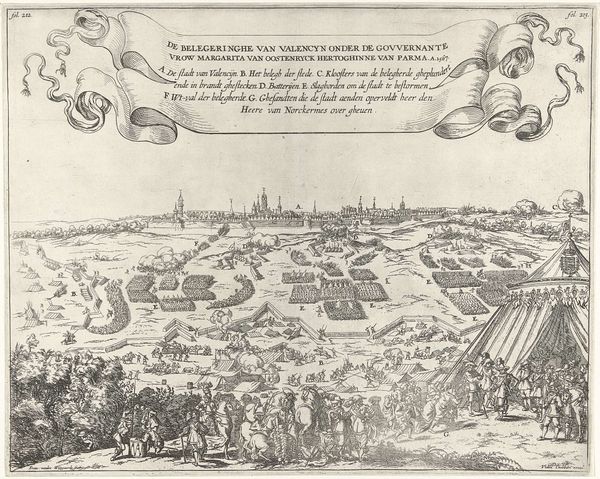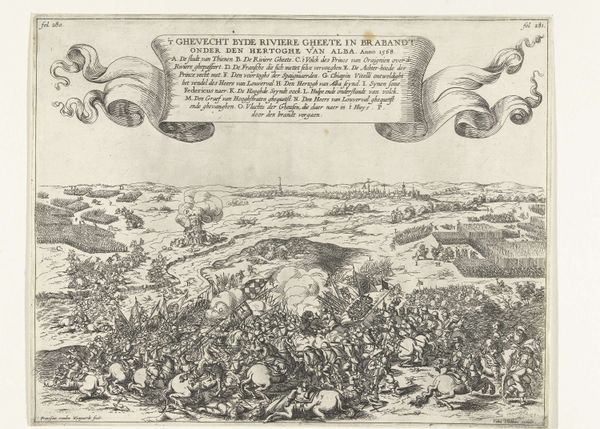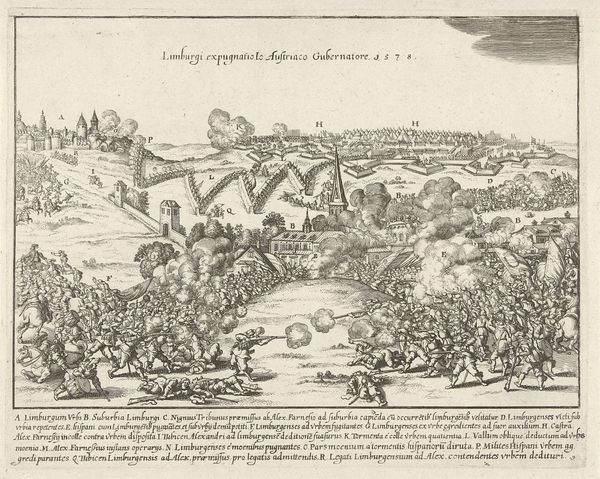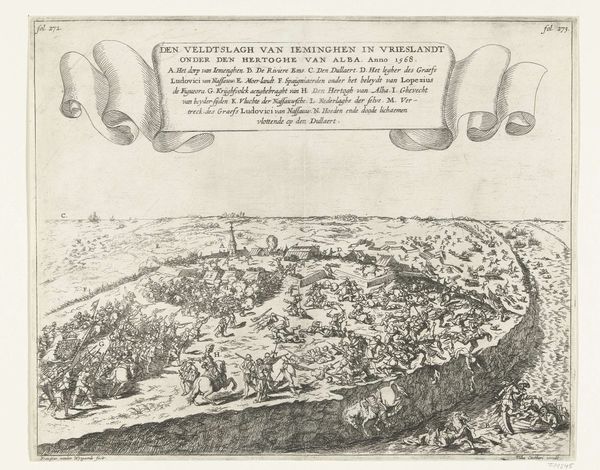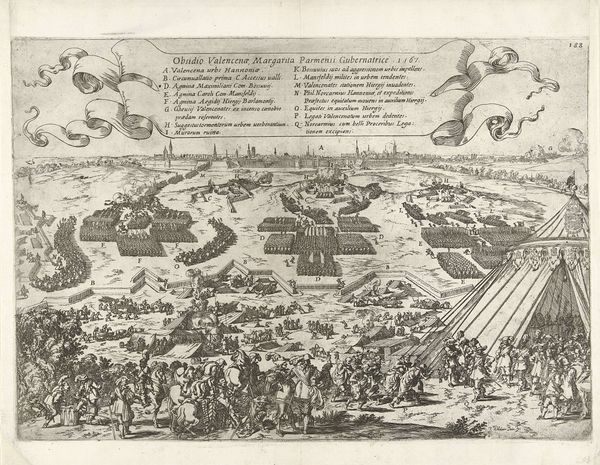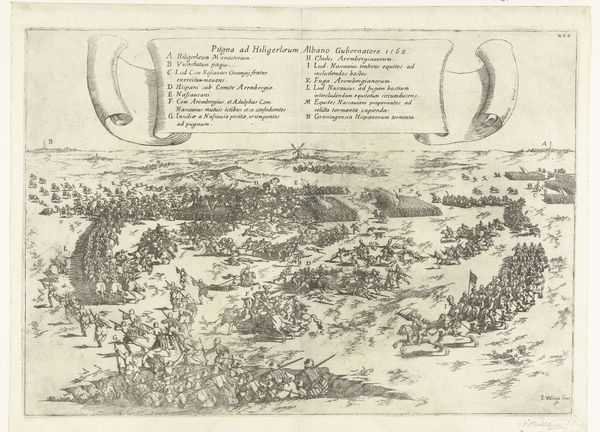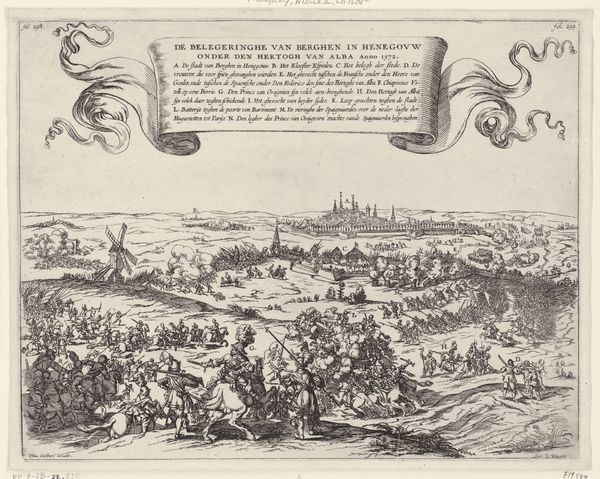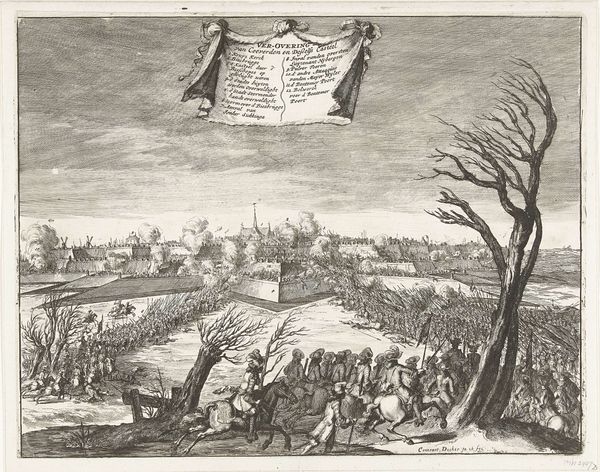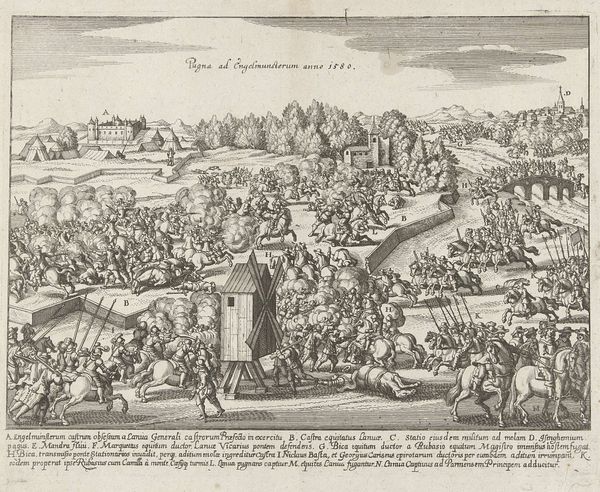
print, engraving
#
baroque
# print
#
landscape
#
line
#
history-painting
#
engraving
Dimensions: height 257 mm, width 320 mm
Copyright: Rijks Museum: Open Domain
Curator: Before us, we have "Slag bij Gembloers, 1578," an engraving created between 1643 and 1645 by Frans van den Wijngaerde. It currently resides here at the Rijksmuseum. The battle scene seems…intricate, chaotic even. Editor: Yes, a sprawling tapestry of tiny figures. The sheer number of bodies gives it a restless energy, doesn't it? I can almost feel the density of the event, rendered visible through the layering and detail. It feels quite overwhelming to take it all in. Curator: Precisely. Wijngaerde's technique relies heavily on line, doesn't it? Look at the crosshatching creating tonal depth, almost sculpting form, giving the viewer a bird’s-eye perspective. There’s very little illusionistic depth beyond that though; instead, we have a conceptual, map-like rendering. Editor: And a deliberately chosen perspective. Considering this print likely served a commemorative or propagandistic function, what does it tell us about how war was manufactured for consumption back then? We are viewing from a position of control and understanding. The labor of creating all these minute marks adds meaning. This print was likely made with multiple steps, perhaps etching, engraving, and potentially other methods. Curator: The strategic organization in its design is meant to translate specific virtues: clarity, order, discipline. But it’s hard to ignore how Wijngaerde uses a Baroque sensibility—layering of detail for a grand visual experience. This kind of approach heightens drama and underscores the weight of historical narrative. Editor: Still, the materiality cannot be divorced from its historical purpose. We can question, for example, who had access to such an image? How did these images function within a developing visual culture of war reportage and commemorative prints? Curator: Excellent questions. Analyzing from both perspectives brings richness. Wijngaerde's composition has the formal qualities of landscape with the density of history painting! It creates, even across centuries, a striking tension in its subject matter. Editor: Indeed. Viewing this print through the lens of material analysis illuminates production, audience, and its purpose in shaping perspectives during periods of conflict and beyond.
Comments
No comments
Be the first to comment and join the conversation on the ultimate creative platform.
